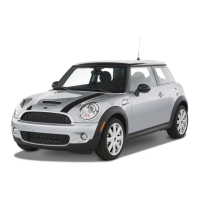Things to remember when driving
Vehicle features and options
This chapter describes model-specific
equipment, systems, and functions that are
currently available, or may become available
in the future, even if they are not present in
the vehicle.
Additional information:
Vehicle equipment, refer to page 8.
Break-in procedures
General information
Moving parts need to work together
smoothly.
The following break-in procedures will help
the vehicle achieve a long service life and
good efficiency.
During break-in, do not use the Launch
Control.
Safety information
Warning
Due to new parts and components, safety
and driver assistance systems can react
with a delay. There is a risk of accident,
injury, or property damage. After installing
new parts or with a new vehicle, drive
conservatively and intervene early if nec-
essary. Observe the break-in procedures of
the respective parts and components.
Engine, transmission, and axle
drive
Up to 1,200 miles/2,000 km
Do not exceed the maximum engine and
road speed:
– For gasoline engine 4,500 rpm and
100 mph/160 km/h.
Avoid full throttle or kickdown under all
circumstances.
From 1,200 miles/2,000 km
The engine and vehicle speed can gradually
be increased.
Tires
Tire traction is not optimal due to manufac-
turing circumstances when tires are brand
new.
Drive conservatively for the first
200 miles/300 km.
Brake system
Brake disks and brake pads must be broken
in to avoid the conditions that can lead to
brake noise. Drive carefully for the first ap-
prox. 300 miles/500 km.
Following part replacement
Observe the break-in procedures again if
components mentioned above are replaced.
Seite 274
DRIVING TIPS Things to remember when driving
274
Online Edition for Part no. 01405B37A59 - II/24

